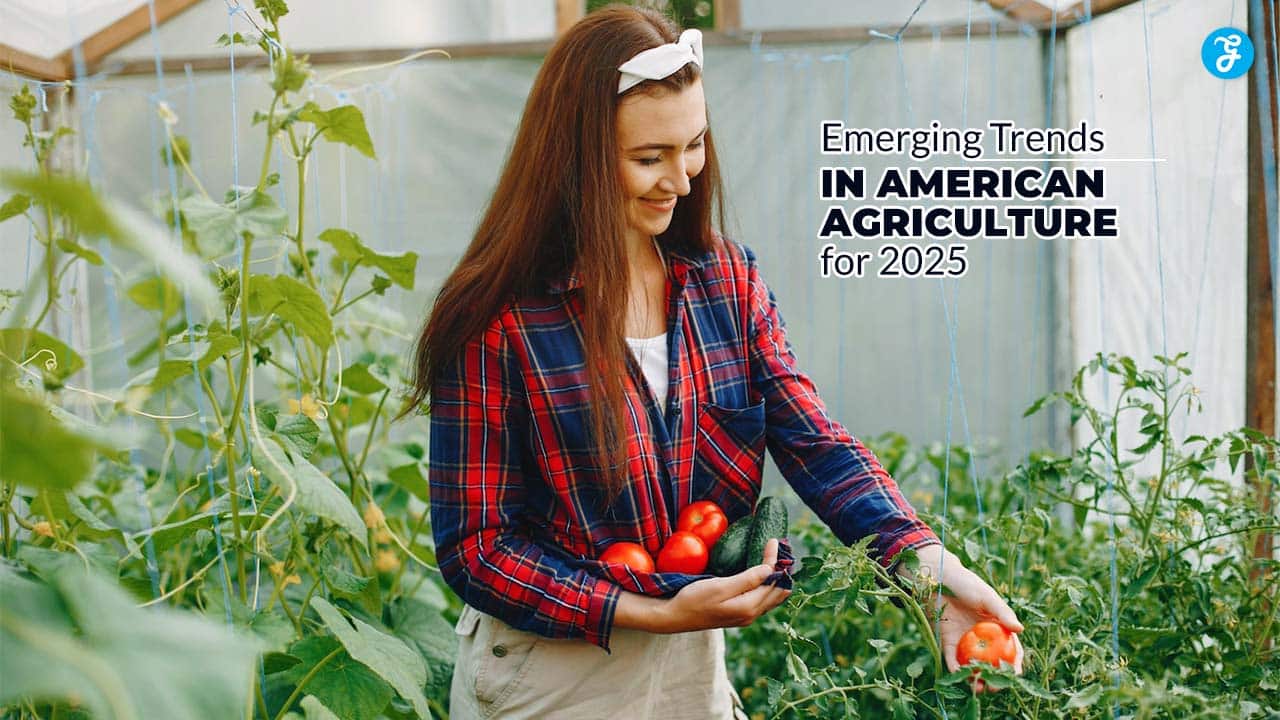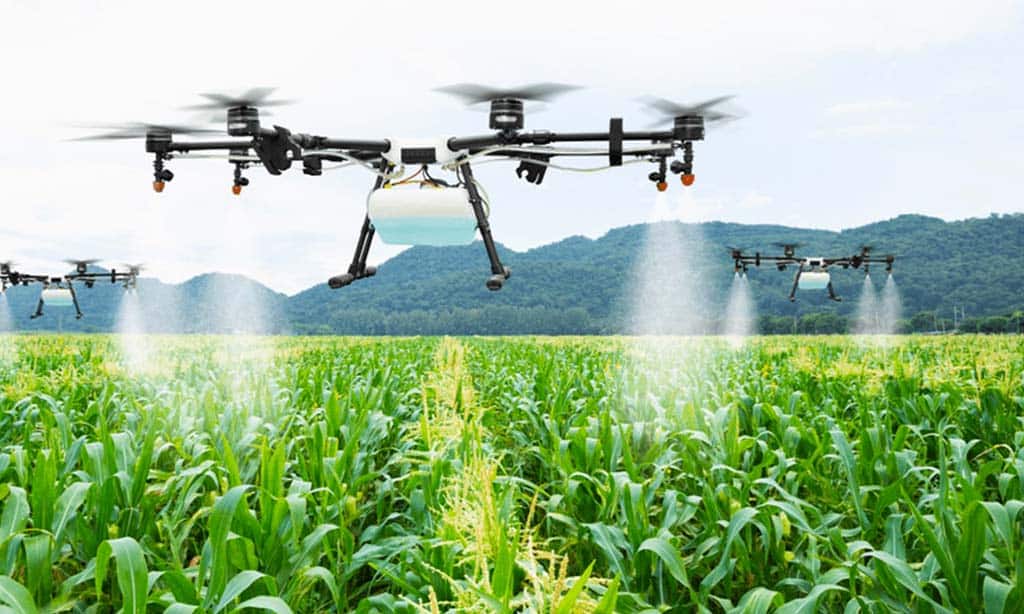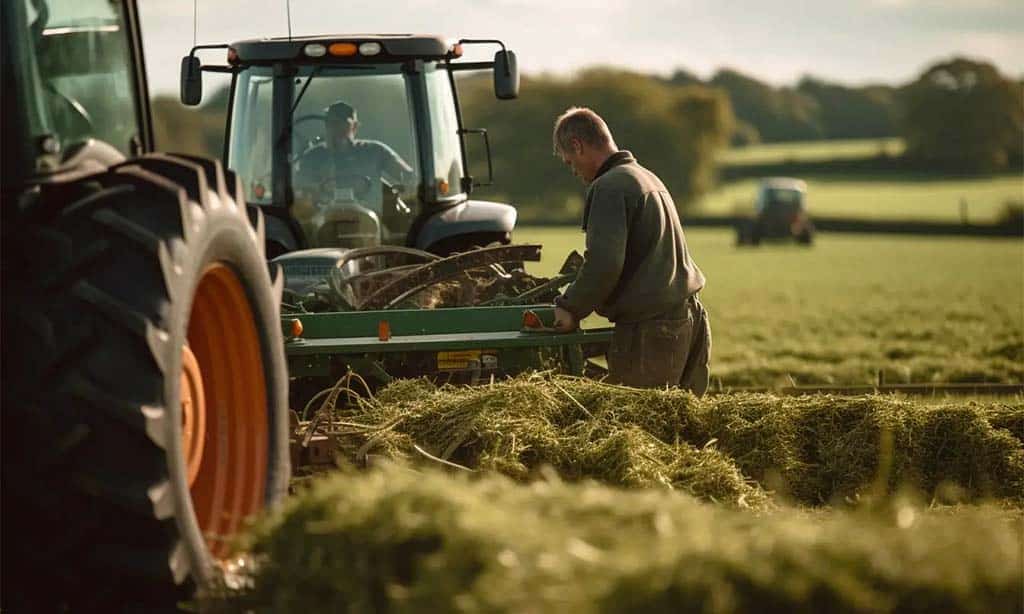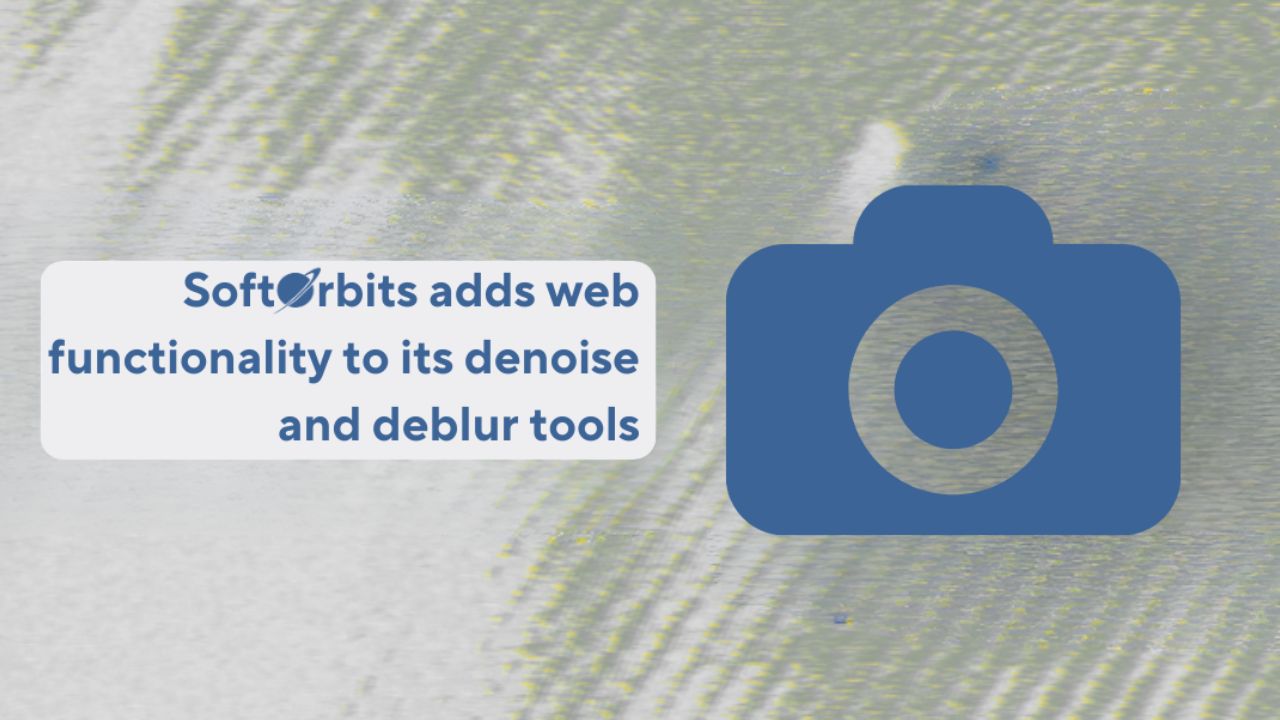Agriculture has always been a cornerstone of American society, and as we approach 2025, the industry is undergoing rapid transformation.
The future of farming in the U.S. will be shaped by new technologies, sustainability efforts, changing consumer demands, and the challenges posed by climate change.
In this article, we’ll explore the 12 emerging trends in American agriculture that will dominate in 2025.
1. Precision Agriculture and Smart Farming
Precision agriculture continues to evolve with the integration of cutting-edge technologies such as sensors, drones, and AI-driven data analytics. By utilizing GPS and IoT devices, farmers can collect real-time data on soil health, crop growth, weather conditions, and more.
These insights enable farmers to make informed decisions that maximize crop yields while minimizing costs and environmental impact.
Key Benefits:
- Increased Efficiency: Targeted use of resources (water, fertilizers, pesticides) reduces waste and costs.
- Higher Yields: Data-driven decisions result in better crop management and improved productivity.
- Sustainability: Precision tools help reduce the environmental footprint by optimizing the use of water and chemicals.
Future Outlook:
By 2025, expect to see even more widespread adoption of autonomous farming equipment, drones for crop monitoring, and AI-powered decision-making tools.
2. Vertical Farming and Indoor Agriculture
Vertical farming, which involves growing crops in stacked layers within controlled indoor environments, is gaining momentum as a solution to limited arable land and urban food production.
These systems use hydroponics, aeroponics, and other soilless farming methods, making them suitable for cities, warehouses, and other non-traditional spaces.
Key Benefits:
- Land Efficiency: Maximizes food production on small plots of land.
- Resource Efficiency: Uses less water and pesticides compared to traditional farming.
- Local Production: Provides fresh, local produce to urban areas, reducing transportation costs and carbon footprints.
Future Outlook:
By 2025, vertical farming could be a major source of fresh produce, particularly in urban areas, with innovations in energy efficiency and automation improving scalability.
3. Sustainable and Regenerative Agriculture
Sustainability is no longer a buzzword but a driving force in American agriculture. Regenerative agriculture practices, such as crop rotation, no-till farming, and agroforestry, are being adopted to restore soil health, enhance biodiversity, and sequester carbon.
Key Benefits:
- Soil Health: Practices like cover cropping and reduced tillage help build rich, fertile soil.
- Carbon Sequestration: Regenerative agriculture captures carbon dioxide, helping mitigate climate change.
- Biodiversity: Encourages a healthy ecosystem with diverse crops, insects, and wildlife.
Future Outlook:
By 2025, more farmers will adopt regenerative practices, driven by consumer demand for sustainably sourced food and incentives from environmental policies.
4. Plant-Based and Lab-Grown Meat
With the rise of plant-based diets and increasing concerns over the environmental impact of meat production, plant-based and lab-grown meats are emerging as alternatives to traditional livestock farming.
Companies like Beyond Meat and Impossible Foods are leading the charge in plant-based protein, while lab-grown meat (cultured meat) is expected to become more viable and affordable by 2025.
Key Benefits:
- Environmental Sustainability: Plant-based and lab-grown meats require less land, water, and energy compared to conventional meat production.
- Healthier Options: Plant-based meats are often lower in cholesterol and fat.
- Ethical Considerations: Lab-grown meat offers an ethical alternative to traditional animal farming.
Future Outlook:
By 2025, these alternative proteins could make up a significant portion of the U.S. meat market, driven by demand from health-conscious and environmentally aware-consumers.
5. Agricultural Drones and AI-Driven Automation
Drones are increasingly used in agriculture for crop monitoring, soil health analysis, and even spraying pesticides and fertilizers.
AI-driven automation will further transform how farms operate, with robotic harvesters and autonomous vehicles helping to reduce labor costs and increase operational efficiency.
Key Benefits:
- Precision: Drones can deliver more accurate data on crop health and field conditions.
- Cost Savings: Automated systems reduce the need for manual labor, lowering operational costs.
- Safety: Drones and robots can perform hazardous tasks, reducing the risk of accidents.
Future Outlook:
By 2025, the integration of AI and drones will be more seamless, with automated equipment taking on even more roles in farming, from planting to harvesting.
6. Climate-Resilient Crops and Genetic Engineering
Climate change is affecting crop yields, with extreme weather events, droughts, and flooding becoming more common. Genetic engineering and CRISPR technology are being used to develop climate-resilient crops that can withstand harsh conditions, improve water efficiency, and resist pests.
Key Benefits:
- Drought Resistance: Genetically modified crops can tolerate drier conditions, reducing the risk of crop failure.
- Improved Yields: Plants engineered for higher yields can help feed a growing population.
- Disease Resistance: Genetic modifications can make crops resistant to diseases, reducing the need for chemical pesticides.
Future Outlook:
By 2025, genetically modified crops designed for specific climate conditions will be commonplace, helping farmers adapt to changing weather patterns.
7. Automation in Livestock Farming
Automation is not limited to crop farming. In livestock farming, robots and automated systems are being used for feeding, milking, and monitoring the health of animals. These innovations are improving productivity while reducing the labor required for daily farm operations.
Key Benefits:
- Efficiency: Automated milking systems and feeders reduce time spent on manual tasks.
- Animal Welfare: Monitoring systems track animal health, ensuring they receive timely care.
- Cost Reduction: Reduced labor costs and improved efficiency result in long-term savings.
Future Outlook:
By 2025, more farms will adopt automated livestock management systems, leading to more efficient, humane, and cost-effective farming practices.
8. Farm-to-Table and Direct-to-Consumer Models
The farm-to-table movement is growing, with consumers increasingly seeking locally sourced, fresh, and organic food.
Direct-to-consumer models, including farmers’ markets, subscription services, and online food delivery platforms, are gaining popularity, allowing consumers to purchase directly from farmers and producers.
Key Benefits:
- Freshness: Direct-to-consumer models ensure food is fresher, as it skips traditional supply chains.
- Transparency: Consumers know exactly where their food comes from and how it is produced.
- Support for Local Economies: Purchasing directly from farmers helps support local agriculture and small-scale producers.
Future Outlook:
By 2025, farm-to-table and direct-to-consumer models will continue to expand, with online platforms and subscription services making it easier for consumers to access local produce.
9. Water-Efficient Farming
As water scarcity becomes a growing concern, water-efficient farming practices are essential for the future of agriculture. Technologies such as drip irrigation, rainwater harvesting, and soil moisture sensors are being used to optimize water use and reduce waste.
Key Benefits:
- Water Conservation: Drip irrigation delivers water directly to the roots, reducing evaporation and runoff.
- Cost Savings: Efficient water use reduces water bills and increases crop productivity.
- Environmental Impact: Water-efficient techniques help preserve local water resources.
Future Outlook:
By 2025, water-efficient farming practices will be more widespread, particularly in regions experiencing drought or water shortages.
10. Carbon Farming and Carbon Offsets
Carbon farming is gaining traction as a way to mitigate climate change. By adopting practices that sequester carbon in the soil—such as agroforestry, cover cropping, and reduced tillage—farmers can generate carbon credits that can be sold to companies looking to offset their emissions.
Key Benefits:
- Climate Mitigation: Carbon farming helps reduce atmospheric CO2 levels.
- Revenue Opportunities: Farmers can earn income by selling carbon credits.
- Soil Health: Many carbon farming practices improve soil health, which can lead to better crop yields.
Future Outlook:
By 2025, carbon farming will be a significant part of the agricultural landscape, with more farms participating in carbon credit programs.
11. Food Waste Reduction Technologies
Food waste is a major issue in agriculture, with an estimated 30% of food produced being wasted. New technologies aimed at reducing food waste, such as improved storage techniques, better packaging, and food waste recycling, are helping farmers minimize losses.
Key Benefits:
- Reduced Waste: Technologies like cold storage and smart packaging keep food fresh longer.
- Increased Efficiency: More food reaches the consumer without spoilage or waste.
- Sustainability: Reducing food waste contributes to environmental sustainability by cutting down on landfills and methane emissions.
Future Outlook:
By 2025, food waste reduction technologies will be more widely adopted across the agriculture supply chain, helping to feed more people with fewer resources.
12. Blockchain for Traceability and Transparency
Blockchain technology is being adopted in agriculture to ensure the transparency and traceability of food products from farm to table.
By securely tracking every stage of the supply chain, from harvest to delivery, blockchain can help consumers know exactly where their food comes from, how it was grown, and the conditions under which it was produced.
Key Benefits:
- Transparency: Consumers can access detailed information about the food they purchase, ensuring it meets quality standards and ethical production practices.
- Supply Chain Efficiency: Blockchain can streamline the agricultural supply chain by reducing fraud, minimizing delays, and improving inventory management.
- Food Safety: In the event of contamination or recalls, blockchain can provide an instant, reliable record of every transaction and movement, ensuring quicker response times.
Future Outlook:
By 2025, blockchain will play a pivotal role in agriculture, with an increasing number of farms and suppliers adopting the technology to meet consumer demand for transparency and sustainable practices.
Wrap Up: The Future of American Agriculture in 2025
The next few years are shaping up to be a transformative period for American agriculture. The emerging trends we’ve explored—ranging from precision farming and vertical agriculture to sustainable practices and the rise of alternative proteins—are set to redefine how food is produced, distributed, and consumed in the U.S.
These innovations offer promising solutions to some of the biggest challenges facing agriculture today, including climate change, resource depletion, and the need for more efficient, sustainable farming practices.
As new technologies continue to emerge and gain traction, the future of farming in America will become more high-tech, sustainable, and responsive to the needs of consumers.
By 2025, American agriculture will likely look very different than it does today—fueled by advancements in AI, robotics, and biotechnology and driven by the need for greater environmental stewardship.
Farmers, consumers, and policymakers alike must work together to support and encourage these trends to ensure a prosperous, sustainable, and food-secure future.
FAQs
1. What is precision agriculture, and how does it help farmers?
Precision agriculture uses technology, such as GPS, drones, and sensors, to gather data about soil conditions, crop health, and weather patterns. This allows farmers to optimize resource use (water, fertilizers, pesticides) and increase crop yields while minimizing costs and environmental impact.
2. What are the benefits of vertical farming?
Vertical farming allows crops to be grown in stacked layers in controlled environments, using less land and water than traditional farming. It enables local food production, reduces the carbon footprint associated with transportation, and ensures a steady supply of fresh produce in urban areas.
3. How can regenerative agriculture help mitigate climate change?
Regenerative agriculture focuses on restoring soil health, increasing biodiversity, and capturing carbon in the soil. Practices like no-till farming, crop rotation, and agroforestry help reduce greenhouse gas emissions and improve long-term farm productivity.
4. What is lab-grown meat, and how does it affect traditional livestock farming?
Lab-grown meat, or cultured meat, is produced by cultivating animal cells in a lab, bypassing the need for traditional animal farming. It reduces the environmental impact of livestock farming by using fewer resources, generating less waste, and producing fewer emissions.
5. What role does blockchain play in agriculture?
Blockchain provides a secure, transparent way to track the movement of food products from farm to consumer. It ensures food safety, enhances supply chain efficiency, and allows consumers to trace the origin and production methods of their food.









































